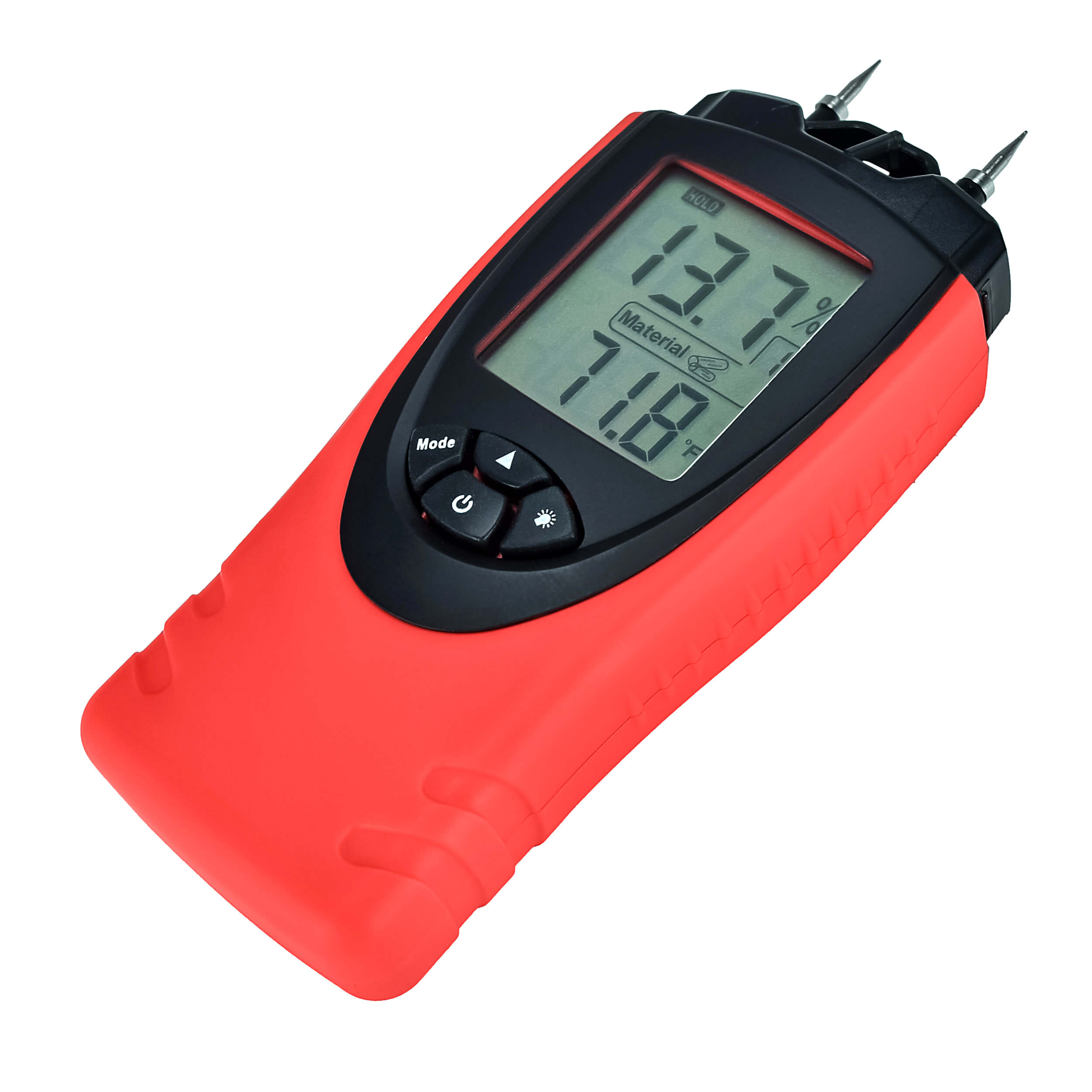Look Into the Globe of Moisture Meters: Whatever You Required to Know
In the realm of moisture meters lies a globe of precision and functionality that commonly goes undetected. These gadgets, while relatively straightforward, hold a wealth of info that can considerably impact different sectors and applications. Recognizing how moisture meters run, the different kinds available, and their diverse uses can clarify their importance in ensuring quality and efficiency. By checking out the intricacies of moisture meters, one can discover an important device that transcends plain dimension, using insights that can make a considerable difference in numerous fields.
Just How Moisture Meters Work
Moisture meters operate by gauging the electrical conductivity or capacitance of products to establish the dampness web content existing. These meters are indispensable tools across numerous industries, consisting of woodworking, farming, and construction. By utilizing different approaches such as pin-type or pinless modern technology, dampness meters give precise readings that assist professionals make informed decisions.
Pin-type dampness meters work by inserting the sharp pins into the material being checked. On the various other hand, pinless dampness meters make use of electromagnetic signals to scan a larger location without creating any damage to the material's surface.
Regardless of the technique utilized, moisture meters play a vital duty in preventing problems such as mold development, structural damage, or product defects triggered by excess wetness. Understanding exactly how these meters job is essential for making certain the quality and stability of materials in different applications.
Kinds of Moisture Meters
Given the critical role wetness meters play in different industries, it is vital to understand the different types available to specialists for accurately examining wetness degrees - Moisture Meter. There are largely 2 main types of wetness meters: pinless and pin-type moisture meters

On the various other hand, pinless wetness meters utilize electromagnetic sensor plates to check a bigger location of the material without causing any type of damages. This type is suitable for quickly scanning big locations and is generally used for flooring, walls, and ceilings. Pinless meters are hassle-free for taking analyses on finished surface areas without leaving any kind of noticeable marks.
Both kinds of wetness meters have their benefits and are chosen based on the specific requirements of the job handy. Understanding the distinctions between these types is critical for professionals to make exact wetness evaluations.
Applications Throughout Industries
Building professionals rely on moisture meters to evaluate the moisture levels in building materials like timber, concrete, and drywall, which is crucial for maintaining structural stability and protecting against concerns like rot or mold. The floor covering sector uses dampness meters to measure the dampness content in subfloors before installing numerous floor coverings, preventing expensive problems due to excess dampness. In the food sector, wetness meters are utilized to monitor and manage moisture degrees in items such as grains, nuts, and dried fruits to maintain quality and high quality.
Tips for Utilizing Moisture Meters
When gauging the moisture material in different materials,Use the moisture meter's calibration setups to ensure accurate readings. Calibration is important for the appropriate functioning of a dampness meter. Before each usage, it is suggested to inspect and change the calibration setups according to the details material being checked. In addition, ensure the meter is established to the right wetness range for the product you are gauging to get one of the most exact results.
When making use of a pin-type dampness meter, place the pins to the proper depth recommended for the material being tested. This makes sure that the wetness analyses are taken from the proper deepness within the product, providing an extra accurate depiction of its wetness content. For pinless dampness meters, bear Click This Link in mind to maintain appropriate contact with the product's surface to get dependable analyses.
On a regular basis examine and replace the batteries in your dampness meter to avoid unreliable analyses as a result of reduced power. Store the meter in a completely dry and secure area when not in use to lengthen its life expectancy and preserve its accuracy. By following these pointers, you can maximize the efficiency of your moisture meter and obtain specific wetness material measurements across different materials.
Maintenance and Calibration
To make sure the accuracy of wetness web content dimensions, normal maintenance and calibration of the wetness meter are essential steps in its correct functioning. Calibration adjusts the wetness meter to make sure that it gives dependable and consistent results.
Calibration must be carried out regularly, especially if the dampness meter is used regularly or in critical applications where exact dimensions are required. Several moisture meters feature calibration tools or can be calibrated by specialist services. Moisture Meter. It is recommended to maintain a log of calibration dates and results to track the performance of the wetness meter with time. By calibrating the moisture check my source and preserving meter frequently, users can trust the accuracy of the dampness material measurements acquired.
Final Thought

In verdict, moisture meters play a crucial function in different sectors by properly measuring the dampness material of products. Understanding exactly how these tools function, the various kinds offered, and correct upkeep and calibration are necessary for obtaining trustworthy outcomes. Whether in manufacturing, building, or farming, using moisture meters helps make sure top quality control and performance in processes.

In verdict, moisture meters play a crucial function in different sectors by properly measuring the dampness content of products.